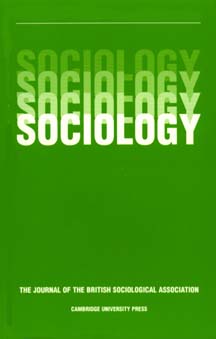The Division of Domestic Labour: Twenty Years of Change?
Published online by Cambridge University Press: 01 August 2000
Abstract
This paper addresses two important questions in the area of the division of domestic labour. Firstly, what change is observable in the patterns of men and women's time spent in domestic labour over the past twenty years, when taking into account structural factors such as employment patterns and social class? Secondly, among which groups of the population of couples can change be identified? One of the problems of this area of research has been that relatively few studies have systematically analysed change over time using directly comparable large-scale data. Here I present a detailed examination of the nature and pattern of change in the domestic division of labour among couples in Britain based on nationally representative time-use diary data collected in 1975, 1987 and 1997. The data are drawn from a cross-national data archive held by the Institute for Social and Economic Research at the University of Essex. Notwithstanding the fact that in 1997 women still performed the bulk of domestic work, it is found that, in relation to changes in time use in other areas of life, the increase in men's participation in domestic work (at least as measured in terms of time contributed) should be regarded as significant. In support of this, there had been (i) a reduction in gender inequality in the performance of some of the normatively feminine-associated tasks, (ii) a larger proportional increase in the time contributed to domestic work tasks by men from lower socio-economic strata, to a position of near equality with men from higher socio-economic positions, and (iii) a substantial increase in more ‘egalitarian’ couples.
- Type
- Research Article
- Information
- Copyright
- © 2000 BSA Publications Ltd
- 128
- Cited by




